[/caption]
Australia has been battling natural disasters on opposite ends of the spectrum: fire and water. Deadly bushfires and massive flooding have plagued different parts of the country. Bushfires in Victoria, Australia, have flared up again during this last week of February, 2009. This region has been battling deadly fires for over a month, only brief periods of respite. According to news reports from the Australian Broadcasting Corporation on February 23, new emergency evacuation warnings over the weekend had forced hundreds of residents from communities across the state into shelters. This image from the Moderate Resolution Imaging Spectroradiometer (MODIS) on NASA’s Aqua satellite shows the fires on February 23 in natural color. Red outlines show the locations where MODIS detected active fires. Below, see an image in different wavelengths highlighting the burned areas, with more images showing the widespread flooding in western Australia.
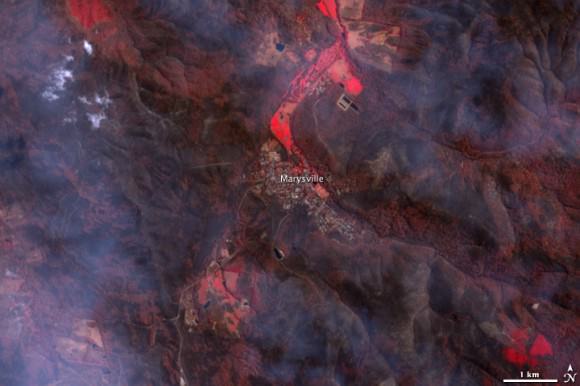
The bushfire pictures use a combination of visible and near-infrared wavelengths of light to make the smoke more transparent and to highlight burned areas. Unburned vegetation is red, while burned areas are charcoal. Other areas where bushfires were threatening communities were Daylesford, Warburton, and Belgrave.
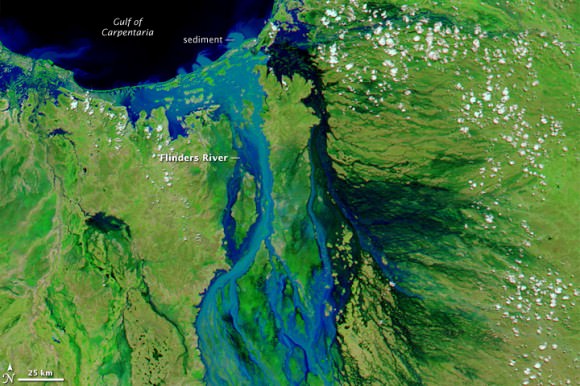
While southeastern Australia battles deadly fires and high heat, much of the rest of Australia is flooded. Wet-season rains brought severe flooding to Western Australia, Queensland, and New South Wales. The most widespread flooding was in Queensland, where more than one million square kilometers flooded, reported the AFP wire service. The image above shows flooding along the Flinders River system in northern Queensland. Below is an image of the area taken on December 16, 2008 before the rain started. On the earlier image, the Flinders River system is discernible only by the lines of green vegetation that follow their courses through the dry land. But two months later, the flooded river system, with its myriad of channels, covered more than 100 kilometers.
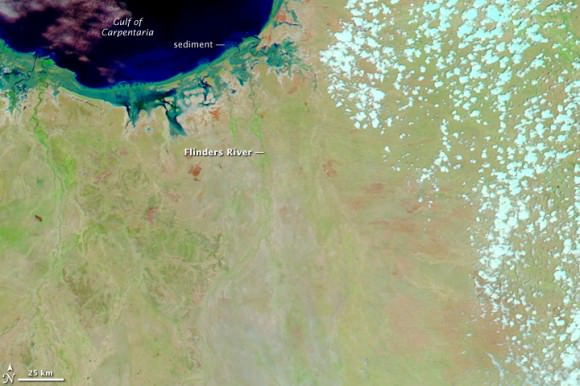
Below, floodwaters surround the town of Normantown Australia—population 1,150—in this satellite image. Water had been encroaching on the town, located along the Norman River in the far northwest of Australia’s Queensland territory, since the start of 2009. The curves of the normal river channel are visible under the water to the right of the town. According to the Australian Broadcasting Corporation nearly 120 centimeters (50 inches) of rain had fallen in the region since the start of the new year.
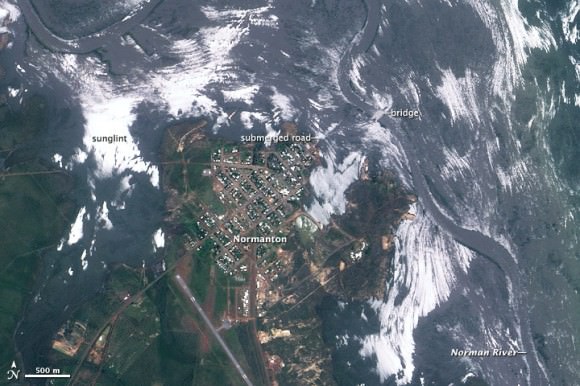
Source: NASA Earth Observatory

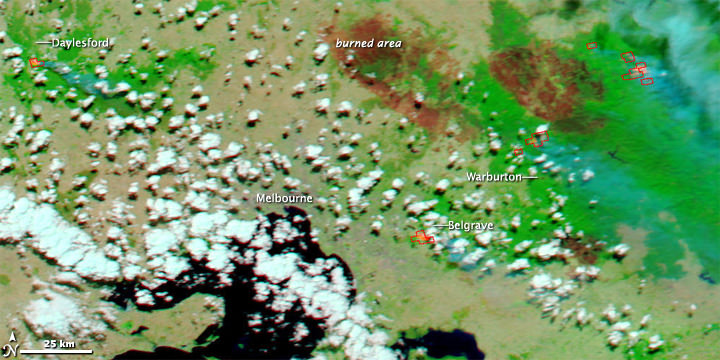
Sure brings home how devastating these fires have been. Even now, and in some places, still continue to burn – though nothing like “Black Saturday” as it has come to be known.
As for the floods, the isolation of people continues in some areas – some isolated for more than a month. Stock losses have been devastating in regions. It was amazing to think that at one stage +60% of the State of Queensland was flood declared
Such is the dramatic contrast of the Australia climate.
Thanks for the interesting story…
“Such is the dramatic contrast of the Australia climate.”
Yep – a continent that spans such a huge latitude and longitude surely makes for some interesting weather and climactic variations.